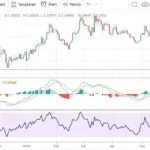Introduction
In an age of economic uncertainty and fluctuating markets, dividend investing has emerged as one of the most reliable ways to build steady, long-term wealth. Unlike growth investing, which focuses solely on capital appreciation, dividend investing provides investors with regular passive income — often paid quarterly — while still allowing room for portfolio growth.
For millennials, Gen Z investors, and retirees alike, dividend stocks offer a practical balance between income and stability. In this article, we’ll explore how dividend investing works, why it matters, and how to build a portfolio that generates consistent passive income.
1. What Is Dividend Investing?
Dividend investing is a strategy that focuses on buying shares of companies that regularly distribute a portion of their profits to shareholders. These payments, known as dividends, can be received as cash or reinvested to purchase more shares.
Typical dividend-paying companies are often well-established, financially stable, and operate in mature industries such as:
- Consumer staples (e.g., Procter & Gamble, Coca-Cola)
- Utilities (e.g., Duke Energy, NextEra Energy)
- Financials (e.g., JPMorgan Chase, Bank of America)
- Telecommunications (e.g., AT&T, Verizon)
By holding these stocks, investors can benefit from two income streams — dividends and capital gains — creating a powerful compounding effect over time.
2. Why Dividend Investing Works
a. Passive Income
Dividend investing allows you to earn money while you sleep. Whether the stock market rises or falls, dividend payments provide a consistent income flow — ideal for supplementing salaries, retirement savings, or reinvestment.
b. Stability and Lower Volatility
Dividend-paying stocks tend to be less volatile than non-dividend stocks. Companies that can afford to distribute regular dividends usually have strong cash flows and stable earnings, making them more resilient during market downturns.
c. Compounding Growth
When dividends are reinvested to buy more shares, your returns grow exponentially over time. This reinvestment effect — often called the snowball effect — can significantly increase portfolio value over decades.
d. Hedge Against Inflation
Regular dividend growth can help offset inflation. Companies that consistently increase their dividend payouts signal financial strength and help maintain investors’ purchasing power.
3. Key Metrics for Evaluating Dividend Stocks
When selecting dividend-paying companies, investors should go beyond yield and assess the financial health of each firm. Here are key metrics to watch:
| Metric | What It Means | Ideal Range |
|---|---|---|
| Dividend Yield | Annual dividend per share ÷ share price | 2–6% (balanced risk & return) |
| Payout Ratio | % of earnings paid as dividends | Below 70% preferred |
| Dividend Growth Rate | Annual rate of dividend increase | Consistent 5–10% growth |
| Free Cash Flow | Cash available after expenses | Positive and growing |
| Debt-to-Equity Ratio | Company’s leverage level | Lower = more financial stability |
A company that pays a high yield but has poor earnings or high debt might not sustain those dividends in the long term. Balance is key.
4. Building a Dividend Portfolio
Step 1: Define Your Goals
Determine whether you want income now (retirement or passive cash flow) or growth later (reinvestment for compounding). Your time horizon will guide your risk tolerance and stock choices.
Step 2: Diversify Across Sectors
Avoid relying on one industry. A well-diversified dividend portfolio may include:
- 30% blue-chip dividend stocks
- 30% dividend growth stocks
- 20% high-yield stocks
- 20% dividend ETFs or REITs
Step 3: Reinvest Dividends
Use a Dividend Reinvestment Plan (DRIP) to automatically reinvest dividends into additional shares — maximizing compounding potential.
Step 4: Monitor Consistency
Focus on companies known as Dividend Aristocrats — firms that have increased their dividends for 25+ consecutive years. Examples include Johnson & Johnson, PepsiCo, and McDonald’s.
5. Dividend ETFs and REITs: Simplified Options
For investors who prefer a hands-off approach, dividend-focused ETFs offer instant diversification and regular payouts. Popular examples include:
- Vanguard Dividend Appreciation ETF (VIG)
- iShares Select Dividend ETF (DVY)
- Schwab U.S. Dividend Equity ETF (SCHD)
Meanwhile, Real Estate Investment Trusts (REITs) are another excellent source of passive income, offering high yields from property-based earnings. Examples include Realty Income (O) and Prologis (PLD).
6. The Risks of Dividend Investing
While dividend investing is relatively stable, it’s not without risks:
- Dividend Cuts: Companies may reduce or suspend dividends during financial stress.
- Interest Rate Fluctuations: Rising rates can make dividend stocks less attractive compared to bonds.
- Concentration Risk: Overinvesting in high-yield stocks can expose you to company-specific downturns.
- Inflation Impact: If dividend growth lags behind inflation, purchasing power erodes over time.
Mitigate these risks by diversifying, focusing on dividend quality, and maintaining a long-term perspective.
7. Dividend Investing in 2025 and Beyond
As global markets evolve, dividend investing remains a cornerstone strategy for long-term wealth. In 2025, trends such as AI-driven portfolio management, sustainable dividends, and ESG-focused companies are gaining traction.
Investors are now combining dividend investing with modern tools — such as robo-advisors and fintech platforms — to automate reinvestment and optimize returns. The result: a smarter, data-driven approach to building passive income.
Conclusion
Dividend investing isn’t about chasing the highest yields — it’s about building a sustainable, growing income stream over time. With discipline, research, and reinvestment, even small dividend payments can evolve into a substantial source of financial independence.
In a world where markets fluctuate and trends come and go, dividends remain a constant — rewarding patience, consistency, and long-term vision.
Start early. Reinvest often. Watch your income grow.















